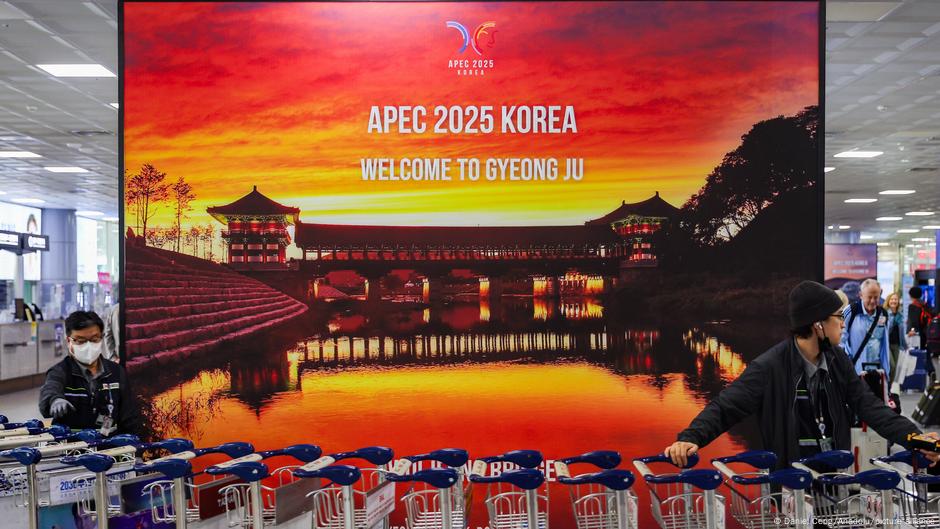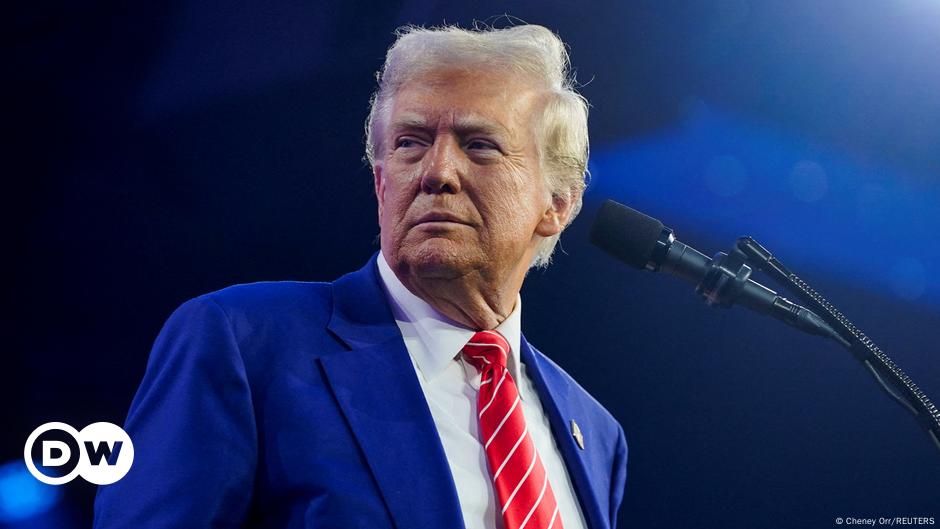Donald Trump’s whirlwind tour of Asia this week concluded with a much-anticipated meeting with Chinese President Xi Jinping on the sidelines of the annual Asia-Pacific Economic Cooperation (APEC) summit hosted this year by South Korea.
So far, the details of the meeting have not revealed any major surprises. The US will reduce tariffs in exchange for China banning chemicals used to make fentanyl. Trump said China will buy “huge amounts” of soybeans from the US after Beijing halted purchases amid the escalating trade war.
Concluding a “wonderful meeting” with Xi, Trump left the city ahead of the main event of the APEC summit: the leaders’ meeting on Friday, which Xi is expected to attend. South Korea has planned several days of talks around the summit’s theme of “building a sustainable tomorrow”.
There remains a question mark over whether the latest reality between the US and China will be sustainable.
“US-China relations will remain highly competitive, and even if some small agreements are reached and temperatures cool down for a while, countries need to prepare for renewed friction, which could have consequences for their interests,” Bonnie Glaser, managing director of the German Marshall Fund’s Indo-Pacific Program, told DW.
For now, a US-China truth
Trump began his second term in office by imposing “reciprocating” tariffs on nearly every country in the world, allies and competitors alike. The tariff rates presented on “Liberation Day” in April defied economic logic, leaving countries wondering how to respond. Since then, many tariffs have been waived, withdrawn or delayed, complicating long-term planning on sourcing and supply chains.
Competition with China has been at the forefront of US trade policy since Trump’s first term. The tariffs imposed in April were a surprise, partly because they were much higher than expected, namely that Trump would limit his aggressive trade policy to China.
However, since Trump’s first term, Beijing has learned to hold back. At one point, both sides threatened tariffs of more than 100% before tensions eased. The latest flare-up in October saw Trump again threaten 100% tariffs after Beijing threatened to restrict exports of high-tech critical rare-earth minerals, a market it dominates.
The uproar nearly derailed plans for Trump-Xi talks in South Korea, before both sides calmed down.
But despite the current detente, which includes a “one-year ceasefire”, the overall economic outlook remains unstable. Trump is known for his unpredictability, such as imposing a 10% tariff on Canada over an obnoxious TV ad last week.
“Washington’s tumultuous trade talks — from China to India to Korea — have left many of its Asian allies questioning whether the United States still views economic integration as a strategic asset or a bargaining chip,” Alison Szalwinski, vice president and China adviser at The Asia Group, a public policy and strategy consultancy, told DW.
Amid this tense geopolitical landscape, forums like APEC will find it more difficult to achieve multilateral outcomes in the current geopolitical environment, Andrew Yeo, senior fellow at the Brookings Institution’s Center for Asia Policy Studies, wrote ahead of Trump’s visit to Asia.
Yeo said, “This has contributed to the continued marginalization of summits in favor of using large gatherings like APEC to hold smaller meetings on the sidelines.”
How APEC helped open up China to the world
The US was a founding member of APEC, which was launched in 1989 to promote open trade and economic cooperation in the Asia Pacific region. This has resulted in more integrated supply chains and cross-border investment, as well as lower average tariffs in the region overall.
China joined APEC in 1991, its first entry into the multilateral economic organization, as part of Beijing’s “reform and opening-up” policy initiated by Deng Xiaoping in the late 1970s.
Participation in APEC discussions pushed China toward market-oriented reforms, transparency, and regulatory modernization, and encouraged liberalized trade and investment policies.
This occurred before China’s membership in the World Trade Organization (WTO) in 2001, which helped boost the development of China’s export machine.
Fast forward to 2025, and APEC host South Korea has listed expected deliverables from the summit, including collaboration among APEC economies on using artificial intelligence in an “inclusive and sustainable manner” and responding to demographic changes such as aging populations and labor shortages.
great deals on the corner
But with the Trump-Xi talks ending and big-ticket agreements with Japan and South Korea struck earlier in the week, the summit has already lost its luster, as the leaders of its largest economies were flying home even before the event began.
Following Trump’s insistence during talks with the leaders of South Korea and Japan this week, the two countries agreed to invest $900 billion (€777 billion) in the US economy in exchange for tariff relief along with deals involving energy, artificial intelligence and critical minerals.
Brookings Asia fellow Patricia Kim wrote that Asian middle powers like South Korea are caught between the US and China.
Kim said, “They are focused on negotiating trade deals with Washington while managing economic risks with Beijing. Across the region, governments are hedging rather than leading in a rapidly expanding transaction landscape.”
America’s Asian allies are coming to the rescue amid uncertainty
And while South Korea and Japan have made their own deals with Trump, there are signs that both countries are hedging against an distrustful America by deepening their trade and security cooperation with other regional partners in the face of more transactional US policies.
“For example, the share of Korean and Japanese exports going to the US is falling, despite both countries announcing trade agreements with Washington in July. However, neither country is looking to multilateral institutions like the WTO or APEC to sort out their trade negotiations with the US,” Jeremy Chan, a senior analyst for Northeast Asia and China at political risk consultancy Eurasia Group, told DW.
Diplomatic engagement between South Korea and Japan is also growing. Before meeting Trump for the first time in August, South Korean President Lee Jae-myung met with then-Prime Minister of Japan Ishiba Shigeru in Tokyo.
Chan said, “Seoul used to consult with Washington before engaging with Tokyo; now the opposite is true, as relations between South Korea and Japan have improved, and both countries face similar challenges in negotiating contentious trade and investment agreements with the US without damaging security ties.”
At APEC, Lee will have his first meeting with Japan’s new prime minister, Takaichi Sane, a conservative who is set to moderate previously hawkish foreign policy views on South Korea.
“In a world where the US is less trustworthy, Japan and Korea will need each other more, with shuttle diplomacy between Seoul and Tokyo likely to continue,” Chan said.
Szalwinski of The Asia Group said countries have for some time been doubling down on “smaller, results-oriented ‘minilateral’ arrangements, which are sometimes more narrow or focused on concrete shared interests.”
What role does APEC play now?
However, in an increasingly transactional world, there is still a need for big tent groups like APEC to provide a platform for dialogue.
Even though Trump did not attend the leaders’ summit, and the talks with Xi took place in the city of Busan, away from the main summit site in Gyeongju, APEC provided a neutral venue for the meeting between the US and China at a critical time.
And the sit-down took tentative steps toward reducing tensions, such as another round of Trump-Xi talks in Beijing in 2026. During their meeting, Xi told Trump that China and the US should not get caught in a “vicious circle of retaliation” against each other, according to Chinese state news agency Xinhua.
“Uncertainty is contributing to the general perception that began several years ago of eroding confidence in multilateralism, but it is not necessarily eroding it,” Szalwinski said.
Edited by: Carl Sexton






Leave a Reply